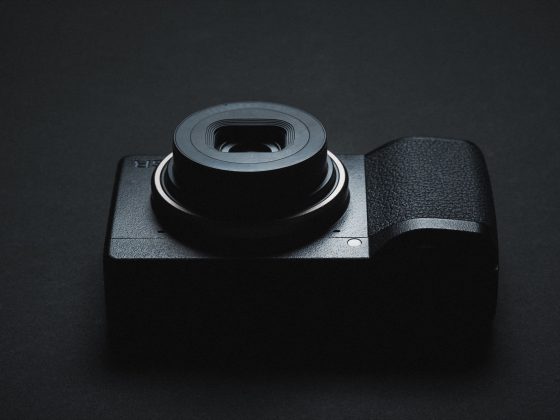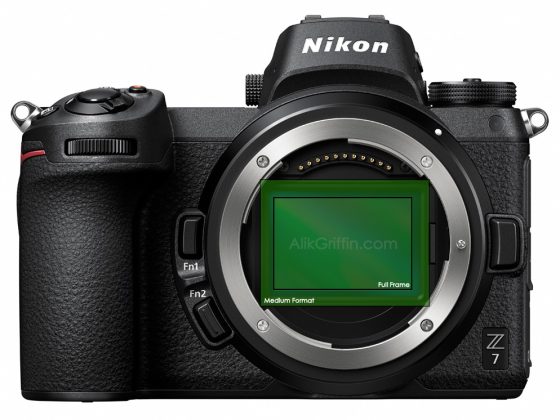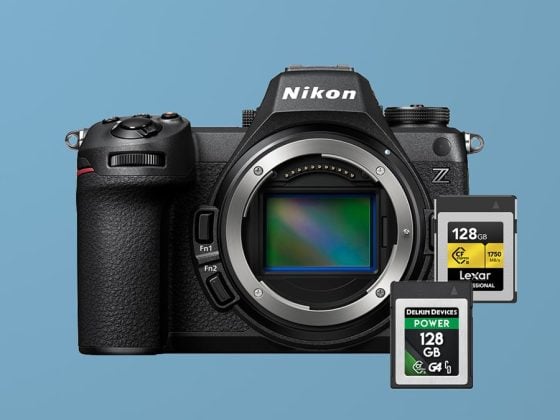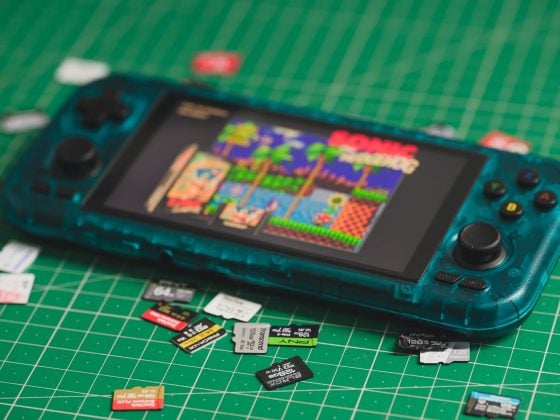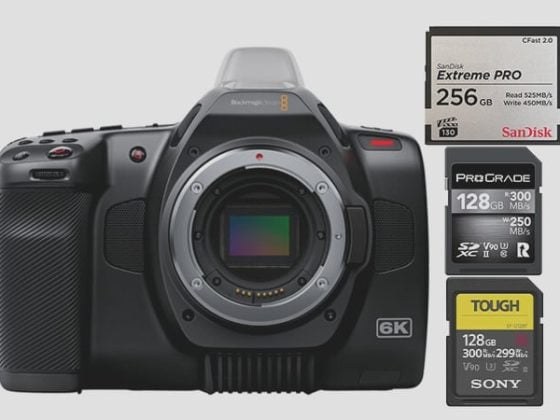The Canon M6 II shoots 4K video at 300Mbps, meaning you’ll need a memory card to maintain a data stream of 37.5MB/s.
While it seems UHS-I memory cards can handle this task, no UHS-I memory card guarantees a minimum write speed greater than 30MB/s, and you will need V60 UHS-II cards as a minimum to guarantee performance.
Recommended Memory Cards For The Canon M6 Mark II
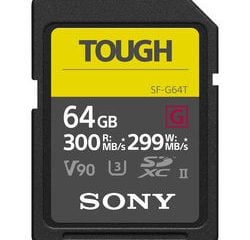
The Canon M6 II supports UHS-II memory cards in two basic speed classes, v60 and v90.
V60 SD cards are great because they are fast enough for 4k video but still offer great value with their price and size.
V90 SD cards are the fastest available and are very useful for clearing that buffer quickly when shooting a 14fps continuous burst.
Here are the top 5 recommended cards with their in-camera speeds.
| Recommended Memory Cards | Canon M6 Mark II Speed | USB Write | USB Read | Price |
| UHS-II V90 | ||||
| Sony G Tough | 108.37 MB/s | 201.0 | 256.8 | Amazon |
| ProGrade V90 | 107.09 MB/s | 164.9 | 258.2 | Amazon |
| Sandisk Extreme Pro 300MB/s | 106.80 MB/s | 190.5 | 258.5 | Amazon |
| UHS-II V60 | ||||
| Delkin Prime v60 | 76.09 MB/s | 89.1 | 252.8 | Amazon |
| Sony M Tough | 74.72 MB/s | 91.6 | 253.6 | Amazon |
In-Camera Buffer Tests
We test every card available at the time to gather in-camera benchmarks. This is done by shooting a few continuous burst sequences until the buffer is full, and then I measure the time it takes the buffer to clear against the amount of data written.
Canon M6 Mark II Camera Specs
| Sensor: 32.5MP APS-C CMOS Sensor Processor: DIGIC 8 Image Processor SD Cards Slot: Single Slot UHS-II Continuous Burst: 14 fps Video: 4K at 25p/29.97p 300Mbps Maximum Memory Card Size: No Limit How Big Is The Buffer? 850MB est. How Many Shots To Fill Buffer? 26 What Size Are The Raw Files: 35MB How Long To Clear Buffer? 6sec |
Also, check out the guide for the accessories for the Canon M6 Mark II.
Best Cards for 4k Video
If you’re buying the Canon M6 Mark II for 4k video, there are a few things you need to know when shopping for memory cards.
Unlike the Canon M50, the M6 II has 100% sensor coverage when hooting 4k and 1080p.
4k Video will record at a bitrate of 300Mbps, while 1080p will record at a bitrate of 90Mbps.
300Mbps equals 37.5MB/s
90Mbps equals 11.25MB/s.
This means that for shooting 4 K video, you’ll need a card that runs at a minimum speed of 37.5MB/s. But you’ll want a card with a rating faster than that, such as v60 cards, so you can maintain a minimum data rate of 60MB/s.
In other words, if you’re shooting 4K video on the Canon M6 II, you’ll need a v60 UHS-II memory card to comply with the specs fully.
SD Memory Cards Canon M6 Mark II | Bottom Line
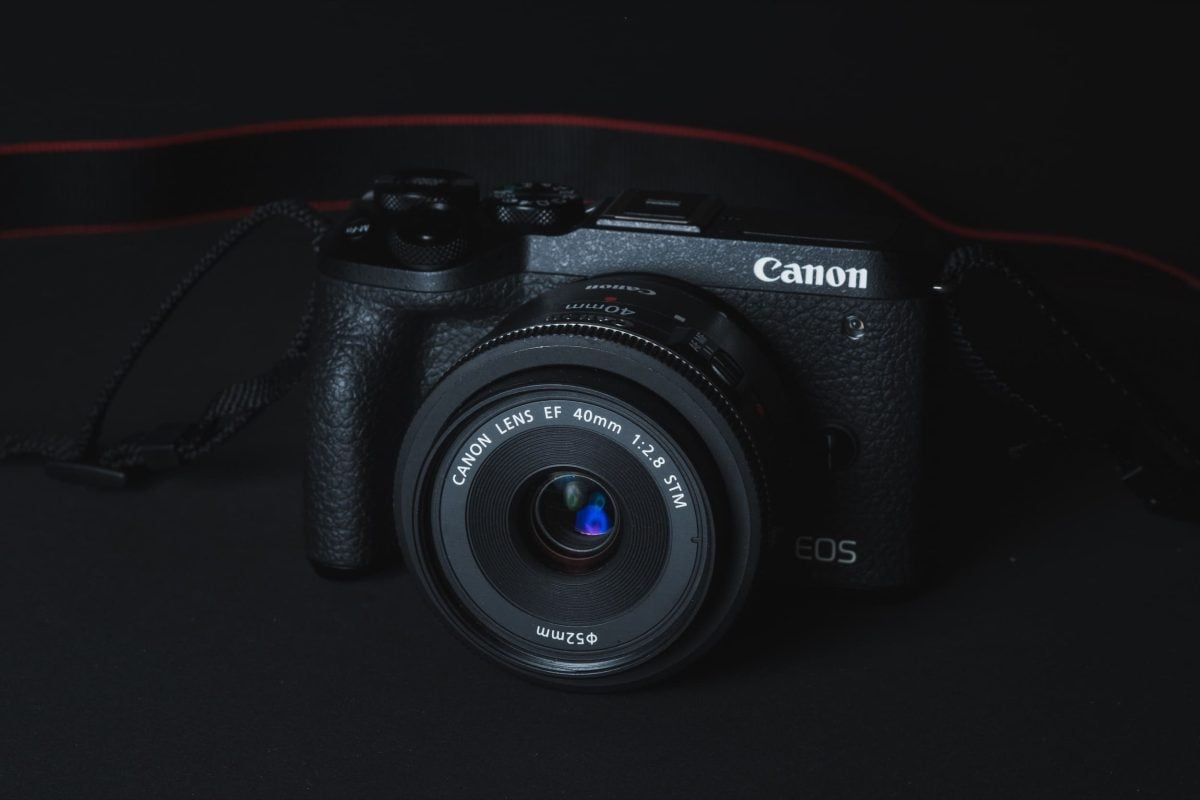
The Canon M6 II is a powerful little beast of a camera, and I’m very excited to see Canon supporting its APS-C line with such amazing specs and solid build quality.
Because the camera takes UHS-II memory cards, you can turn it into a high-performance continuous shooting machine or save money using slower v60 UHS-II cards or even UHS-I cards. The choice is yours.
Regarding size, you’ll probably want a card no smaller than 64GB, but many people are now going with 128GB cards.



